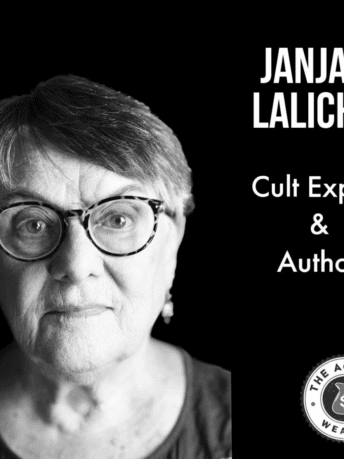March 20, 1995, is a date the world will long remember as the
day deadly gas was released into the Tokyo subway system, killing 12
citizens and afflicting 5,500 more.
The fear generated by that indiscriminate attack echoed around the world. Poison gas is viewed by most of us as one of the most frightening threats to life. Because it is virtually unseen, it may be breathed in by all, from babies to
grandparents, and nearly instant death results.

day deadly gas was released into the Tokyo subway system, killing 12
citizens and afflicting 5,500 more.
Within days of the attack, evidence pointed toward Aum Shinrikyo,
a cult led by 40-year-old Shoko Asahara. The Aum organization is said
to be worth more than one billion dollars, with ten to thirty thousand
members.
Charges against Asahara and some of his disciples include
alleged murder, kidnapping, and manufacturing and stockpiling lethal
chemicals. Recently we learned of the unearthed remains of a lawyer
known for fighting Aum. The lawyer, his wife, and 14-month-old son
disappeared in 1989.
Nations across the globe have their share of cults. Some are
home-grown, others are transplants from other lands. But until now,
no cult anywhere had yet turned to the degree of mass terrorism of
which Aum is accused.
Because cults vary in their external trappings, a city, a nation,
or the world can never be quite sure what paths a particular group
may take until the conduct and intentions of the leader become apparent
to those outside the group.
Cults as we know them today are totalitarian organizations whose leaders command and direct the followers. Therefore, what the leader is like—his personality, desires, and worldview—determines what the cult becomes, and whether or not it turns to violence.
Cults as we know them today are totalitarian organizations whose leaders command and direct the followers. Therefore, what the leader is like—his personality, desires, and worldview—determines what the cult becomes, and whether or not it turns to violence.
Asahara followed the path taken by many cult leaders, using many
of the tricks and tactics seen in cults of all stripes over the decades.
These include deceptively recruiting members; selectively looking for
educated, affluent young adults; and after getting them involved, using
well-planned social and psychological persuasion techniques to mold
2 recruits into good cult members and coerce them to remain.
Aum’s membership was comprised of mostly young adults, but also
entire families and the elderly joined. To seduce them into getting
involved, Asahara promised his devotees heaven on earth, saying he
would free them from society’s “evils,” from parents’ pressure, from
having to work for stolid corporations.
They would recreate the world the way they dreamed it could be by building Asahara’s “1,000-year kingdom.” In return, members were to turn over all money and possessions, and live by Asahara’s rigid rules. Once in, leaving was difficult, if not impossible.
Once in, leaving was difficult, if not impossible.
There is a widespread misconception that only stupid, weird, and
crazy people join cults. Not so. Cult leaders want bright, obedient
followers who will recruit, fund-raise, run the businesses and front
groups, and help keep other members in line.
Cults look for and recruit high-functioning, productive individuals. Nowhere is this more obvious than in Aum, where the members’ level of education is far above average, both in Japan and internationally. Doctors, lawyers, technicians, and scientists are prominent among Aum’s members.
All of us have vulnerable periods in our lives during which we are more open to suggestion and persuasion—such as after a death in the family, the loss of a job, some type of rejection, or simply being new to an area or on vacation.
All of us have vulnerable periods in our lives during which we
are more open to suggestion and persuasion—such as after a death in
the family, the loss of a job, some type of rejection, or simply being
new to an area or on vacation.
If approached by a determined cult recruiter at such a time, any one of us can be led down the path. Over time and without realizing it because of the cult’s hidden agenda, followers become dependent on the cult financially, socially, spiritually, and in all other ways. This is reinforced by the cult’s inducing dependency, guilt, and fear in the members.
At some point most cult members realize they have passed a point
of no return. They have shattered family connections, dropped earlier
life patterns, renounced former interests and associations, and suddenly
find there is nowhere to turn.
Cult leaders cleverly convince followers to blame themselves for anything that goes wrong, and to never challenge the leader or his ideas. Members are systematically trained to adopt the belief that the only way to survive is to stay in the group, keep quiet, and follow orders.

Although similar in many ways to cults everywhere, in one very fundamental way Aum is different.
Although similar in many ways to cults everywhere, in one very
fundamental way Aum is different. Aum stands apart in its unprecedented
use of heinous and deadly techniques to shape and control members’
behavior, including the forced ingestion of hallucinogenic drugs,
repeated immersion in scalding baths, and detention in small, dark
structures for days or months on end.
But such lengths were gone to not only internally—under Asahara’s leadership, the Aum cult was not afraid to act out externally in the most unimaginable ways. And by daring to expose one of the world’s most populous cities to poison gas, Aum has shown us all that what begins as a cult can at the command of its self-appointed, self-anointed leader become a force of deadly destruction.
Cults are not just a Japanese problem, or an American problem,
or a European problem. Cults are an international problem. Yet most
people do not want to face the fact that study and prevention may be
preferable to being stunned by the behavior of certain cults.
We cannot afford to remain reactive and one step behind. Cults are indeed a public menace.
We cannot afford to remain reactive and one step behind. Cults are indeed a public menace: they have an impact on the health, welfare, safety, and comfort of their members, the relatives and friends of members, the surrounding society—and we see now that even the world at large becomes the arena of impact. It is our hope that citizens everywhere will become aware and vigilant by educating themselves about these groups. This would
better enable all of us to help ourselves, our families, and our friends
to confront and defeat the cults’ harmful influence.
Clinical psychologist Margaret Thaler Singer and cult information
specialist Dr. Janja Lalich are coauthors of Cults in Our Midst: The Hidden
Menace in Our Everyday Lives (Jossey-Bass Publishers, 1995).
© 1995 Margaret Thaler Singer and Janja Lalich
This article is also available in PDF format. Please click here to open it.






